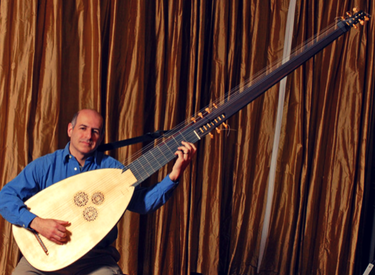The backbone of the baroque orchestra | View in browser

About the Continuo Instruments used in Monteverdi 450
The assortment of bowed and plucked instruments from the English Baroque Soloists that Sir John Eliot Gardiner prefers to put front and center in his semi-staged operas – as close to the action as possible – are collectively known as the continuo section or the "continuo band." The continuo section reads the part of the score known as the "figured bass" – a skeletal structure of melody (in this case, the singer) and harmony (the bass line and the chords suggested by the counterpoint between melody and bass). Bowed instruments like the cello and viola da gamba play the printed bass line. Keyboard instruments (harpsichord, organ) and plucked instruments like the harp, guitar, and lute play the chords. Early 17th century composers relied on the dynamic capabilities of the continuo band which is able to support the singers without overshadowing them, fill out either rich or austere harmonies, and be the rhythmic glue keeping the entire ensemble together.
Monteverdi and other early opera composers rarely specified how many or which of these instruments to employ – often this was left up to what was available and the opera house's budget. The published score of Monteverdi's Orfeo, however, lists a decadent collection: three theorbos, two harpsichords, two organs, regal, and harp! Scroll down to learn more about some of the instruments you might see during the Monteverdi 450 opera trilogy.
A few plucked and bowed instruments in the continuo band
Next week: Poppea's ascendance to the throne in four duets
Alexandra C. and John D. Nichols
Engagement Lead Sponsor
Abby McCormick O'Neil and D. Carroll Joynes
October 12 and October 13 Performance Sponsor
Katherine A. Abelson
October 15 Performance Sponsor





